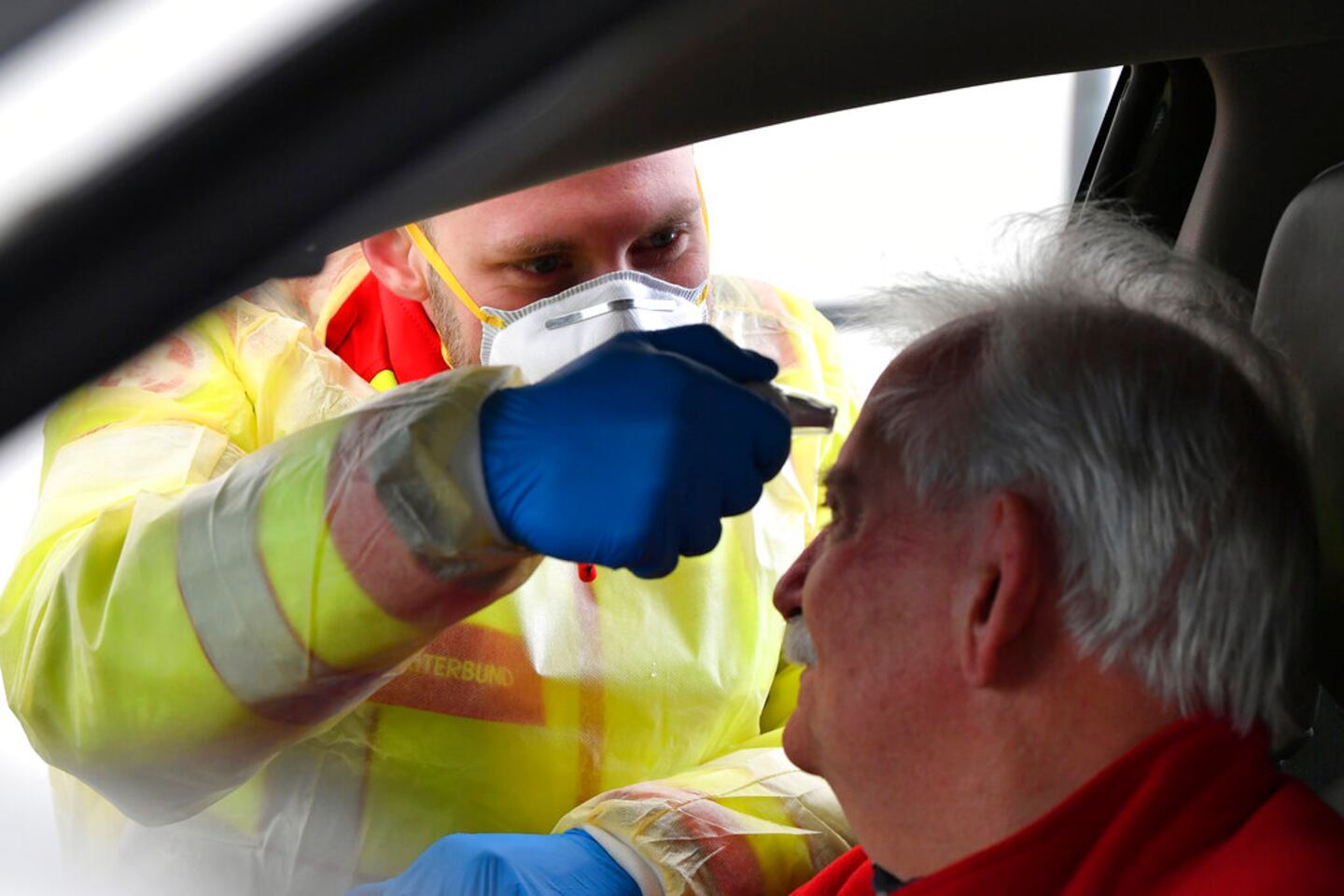As COVID-19 continues to spread around the globe, the Centers for Disease Control and Prevention has been warning Americans that they should prepare for “significant disruptions” in their daily lives.
But what does that mean to the average American?
More than 110,000 people worldwide have contracted COVID-19, and nearly 4,000 people have died from the disease and officials around the world are working to contain the virus by restricting travel and in some countries issuing large-scale quarantines.
What are the chances that Americans will see more quarantines? Here’s a look at what federal and state governments can do to contain the spread of COVID-19.
What has the federal government done to date on quarantines and restrictions?
The federal government has taken two key actions to deter persons with suspected COVID-19 infection from entering the country or spreading the virus to persons within the United States.
President Donald Trump issued a proclamation on Jan. 31, restricting non-U.S. citizens who traveled from mainland China from entering the United States.
The proclamation also directed the secretary of the Department of Homeland Security “to regulate the travel of persons and aircraft to the United States to facilitate the orderly medical screening and, where appropriate, quarantine of persons who enter the United States and who may have been exposed to the virus.”
On Feb. 2, 2020, the DHS imposed screening and quarantine rules for anyone – U.S. citizens included – who would arrive in the United States within 14 days after having been in mainland China. Those persons traveling by air must arrive at one of 11 designated airports where they were to be screened.
On Feb. 29, Trump issued a proclamation that stopped those traveling from Iran from entering the country.
How can the federal government issue an isolation or quarantine order?
Under the Commerce Clause of the U.S. Constitution, the federal government is granted two functions to help protect the public by preventing exposure to people who have or may have a contagious disease. Those functions are isolation and quarantine.
Under the CDC definition, isolation involves separating sick people with a quarantinable communicable disease from people who are not sick. Quarantine separates and restricts the movement of people who were exposed to a contagious disease to see if they become sick.
What does the law allow concerning isolation and quarantine?
The secretary of Health and Human Services is authorized under section 361 of the Public Health Service Act (42 U.S. Code § 264), to take measures to prevent both the entry and the spread of communicable diseases in the United States and between states.
The authority to carrying out decisions to isolate and quarantine has been delegated to the CDC.
What does the CDC do under the Public Service Act?
Under 42 Code of Federal Regulations parts 70 and 71, the CDC “may authorize the apprehension, medical examination, quarantine, isolation, or conditional release of any individual for the purpose of preventing the introduction, transmission, and spread of quarantinable communicable diseases, as specified by Executive Order.”
The law goes on to say that the person must be “reasonably believed to be infected with a quarantinable communicable disease in a qualifying stage and is moving or about to move from a state into another state; or the individual is reasonably believed to be infected with a quarantinable communicable disease in a qualifying stage and constitutes a probable source of infection to other individuals who may be moving from a state into another state."
What about state laws?
While the laws can vary, most states have isolation and quarantine laws aimed at controlling the spread of disease within state borders. The legislation authorizes governors or state boards of health to implement quarantines if needed.
Who determines when to quarantine and who enforces the quarantines?
Generally, it is the federal government’s role to:
- Act to prevent the entry of communicable diseases into the United States. Quarantine and isolation may be used at U.S. ports of entry.
- Is authorized to take measures to prevent the spread of communicable diseases between states.
- May accept state and local assistance in enforcing federal quarantines.
- May assist state and local authorities in preventing the spread of communicable diseases.
It is the state, local, or tribal authorities role to:
- Enforce isolation and quarantine within its borders.
In certain events, state, local and tribal health authorities can enact separate but coexisting quarantine powers with the federal government. if there is a conflict between federal and state actions on quarantines or isolation then federal law is supreme.
Who enforces a quarantine or isolation order?
Once a quarantine or isolation order is issued, the order may be enforced at the local or state level by local or state police or other law enforcement agencies.
U.S. Customs and Border Protection and the U.S. Coast Guard are authorized to help enforce federal quarantine orders.
For which diseases can the government issue a quarantine?
The federal government has a list of diseases for which federal quarantine is authorized. They are:
- Cholera
- Diphtheria
- Infectious tuberculosis
- Plague
- Smallpox
- Yellow fever
- Viral hemorrhagic fevers
- Severe acute respiratory syndromes
- Flu that can cause a pandemic
However, the president may amend this list whenever necessary to add new communicable diseases including emerging diseases that are a threat to public health, like COVID-19.
When was the last time a large-scale quarantine was enforced in the U.S.?
A large-scale quarantine is rare. The last one was during the influenza pandemic in 1918–1919.
Cox Media Group








